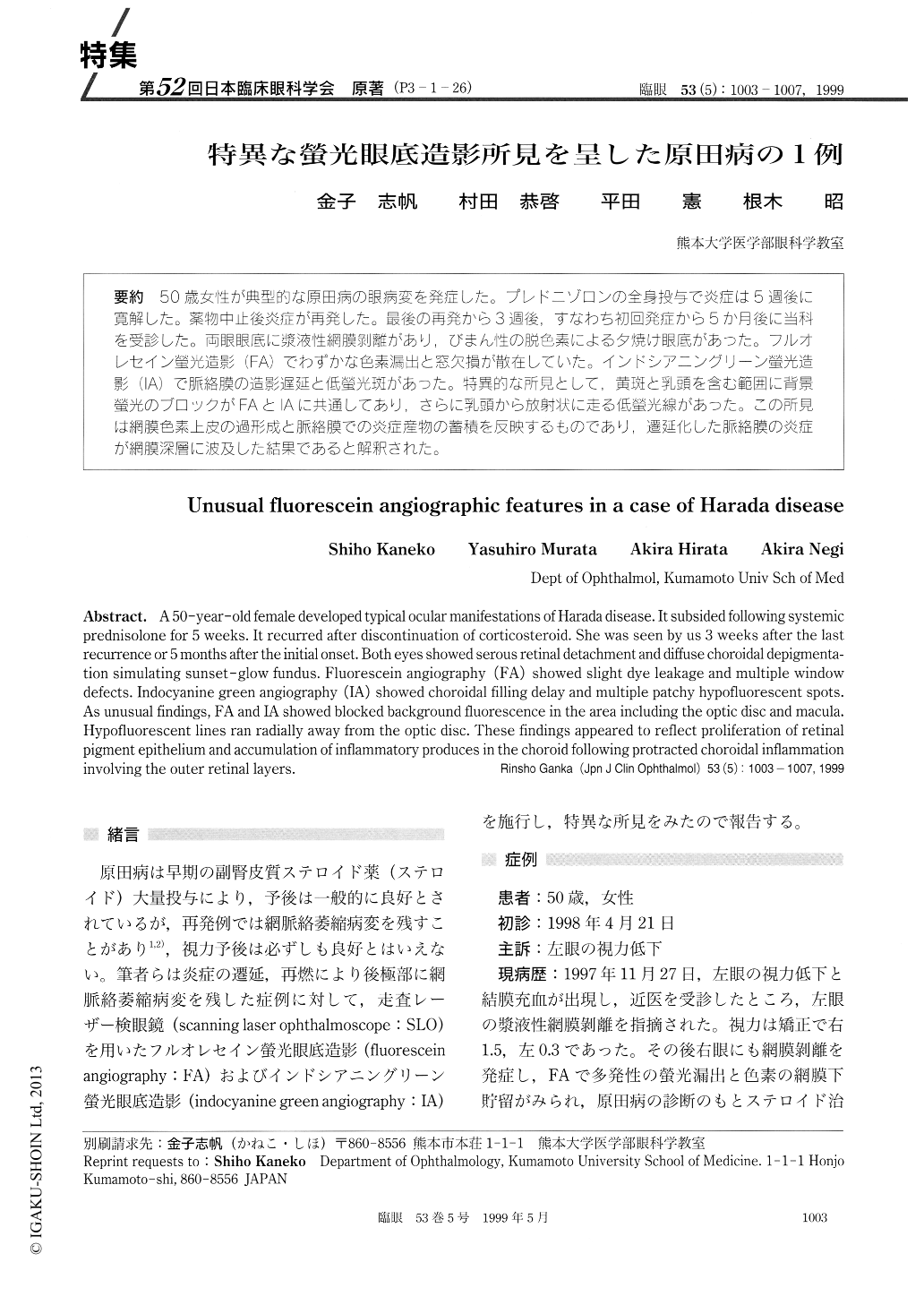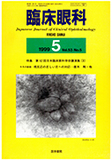Japanese
English
- 有料閲覧
- Abstract 文献概要
- 1ページ目 Look Inside
(P3-1-26) 50歳女性が典型的な原田病の眼病変を発症した。プレドニゾロンの全身投与で炎症は5週後に寛解した。薬物中止後炎症が再発した。最後の再発から3週後,すなわち初回発症から5か月後に当科を受診した。両眼眼底に漿液性網膜剥離があり,びまん性の脱色素による夕焼け眼底があった。フルオレセイン螢光造影(FA)でわずかな色素漏出と窓欠損が散在していた。インドシアニングリーン螢光造影(IA)で脈絡膜の造影遅延と低螢光斑があった。特異的な所見として,黄斑と乳頭を含む範囲に背景螢光のブロックがFAとIAに共通してあり,さらに乳頭から放射状に走る低螢光線があった。この所見は網膜色素上皮の過形成と脈絡膜での炎症産物の蓄積を反映するものであり,遷延化した脈絡膜の炎症が網膜深層に波及した結果であると解釈された。
A 50-year-old female developed typical ocular manifestations of Harada disease. It subsided following systemic prednisolone for 5 weeks. It recurred after discontinuation of corticosteroid. She was seen by us 3 weeks after the last recurrence or 5 months after the initial onset. Both eyes showed serous retinal detachment and diffuse choroidal depigmentation simulating sunset-glow fundus. Fluorescein angiography (FA) showed slight dye leakage and multiple window defects. Indocyanine green angiography (IA) showed choroidal filling delay and multiple patchy hypofluorescent spots. As unusual findings, FA and IA showed blocked background fluorescence in the area including the optic disc and macula. Hypofluorescent lines ran radially away from the optic disc. These findings appeared to reflect proliferation of retinal pigment epithelium and accumulation of inflammatory produces in the choroid following protracted choroidal inflammation involving the outer retinal layers.

Copyright © 1999, Igaku-Shoin Ltd. All rights reserved.


